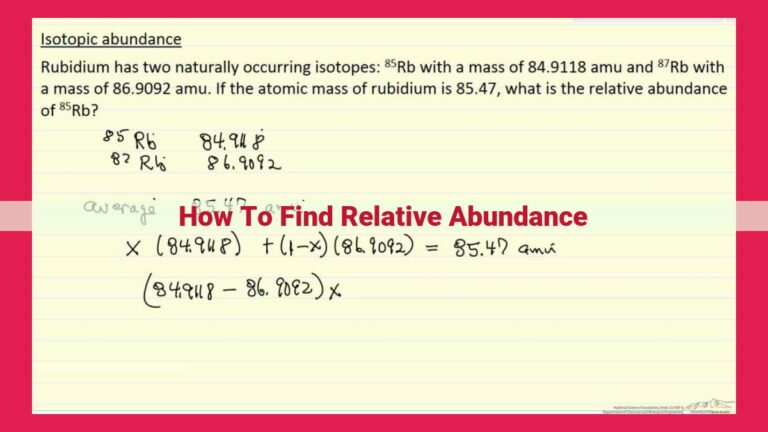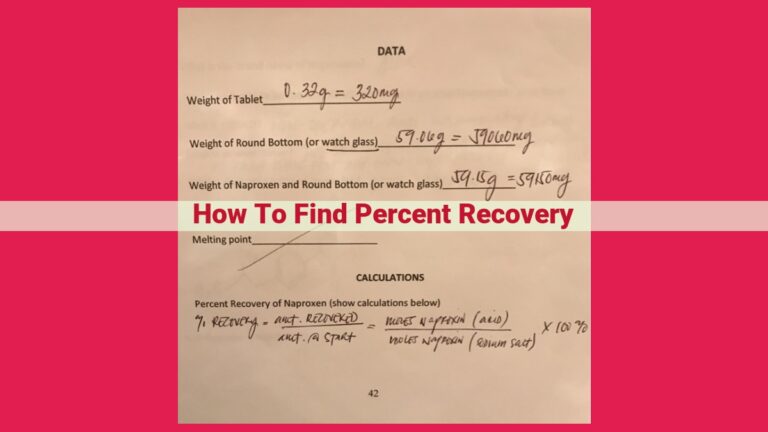Calculating Signal To Noise Ratio: Essential Guide For Enhanced Signal Quality
To calculate Signal to Noise Ratio (SNR), measure both the signal power and noise power. Compute SNR using the formula SNR = Signal Power / Noise Power. Express the result in decibels (dB) for ease of interpretation. Consider the Noise Figure of amplifiers to account for their impact on SNR. Understand the distinction between SNR and Signal-to-Interference-plus-Noise Ratio (SINR) in systems with interference.
Signal to Noise Ratio (SNR): The Key to Communication Clarity
In the bustling realm of communication, the signal-to-noise ratio (SNR) stands as a pivotal metric, determining the clarity and efficiency of data transmission. It’s a measure of the ratio between the intended signal power and the unwanted noise power, providing invaluable insights into the quality of communication systems.
Significance of SNR in Communication Systems
SNR plays a crucial role in safeguarding the integrity of information transmitted over communication channels. When the SNR is high, the signal is prominent and easily distinguishable from the superimposed noise, ensuring clear and precise data reception. Conversely, a low SNR indicates a weak signal or excessive noise, compromising the reliability and accuracy of the communication.
Related Concepts: Signal Power, Noise Power, and Noise Figure
To fully comprehend SNR, it’s essential to understand the underlying concepts of signal power, noise power, and noise figure:
-
Signal Power: This refers to the power carried by the desired signal, determining its strength and the ease with which it can overcome the noise.
-
Noise Power: Unwanted disturbances, both external and internal to the communication system, contribute to noise power, degrading the signal’s quality.
-
Noise Figure: A measure of the added noise introduced by amplifiers or other devices in the signal chain. The lower the noise figure, the better the device’s ability to preserve the signal’s integrity.
Calculating Signal Power: A Crucial Aspect of SNR Estimation
In the realm of signal processing and communication, understanding the strength of the desired signal is vital for determining the Signal to Noise Ratio (SNR). Signal power represents the intensity or magnitude of the signal being transmitted or received. It plays a direct and significant role in influencing the overall SNR value.
Determining signal power is a fundamental step in SNR calculation. Engineers and technicians employ various techniques to measure this parameter accurately. One common method involves utilizing specialized instruments like power meters or spectrum analyzers. These devices provide precise readings of the signal power by measuring its amplitude or voltage.
The power of the signal directly influences the SNR. A higher signal power implies a stronger and more prominent signal, resulting in a higher SNR. This is because a more robust signal can withstand the presence of noise and maintain its integrity better. Conversely, a weaker signal power leads to a lower SNR, as noise becomes more dominant and degrades the signal quality.
It is crucial to recognize that signal power and SNR are interdependent and must be considered together when assessing the performance of a communication system. By understanding the methods to determine signal power accurately, engineers can optimize signal transmission and reception, maximizing SNR and ensuring reliable communication.
Measuring Noise Power: Quantifying Unwanted Disturbances
In the realm of communication systems, unwanted disturbances known as noise can significantly degrade the quality of signals. Understanding noise power is crucial for calculating the Signal to Noise Ratio (SNR) and assessing the impact of noise on signal integrity.
Noise can originate from various sources, such as thermal noise, shot noise, and flicker noise, which introduce random fluctuations in the signal. To measure noise power, we typically use instruments like spectrum analyzers or noise figure meters. These devices can capture the noise spectrum and quantify its power within a specific bandwidth.
The noise power is characterized as the average power of the noise signal over the bandwidth of interest. It plays a significant role in determining the SNR, as a higher noise power results in a lower SNR. This is because the noise power effectively masks the signal, making it more challenging to distinguish from the actual information being transmitted.
Calculating Signal to Noise Ratio (SNR) – A Step-by-Step Guide
In the realm of communication systems, Signal-to-Noise Ratio (SNR) plays a crucial role in determining the quality and reliability of the transmitted information. It represents the ratio of signal power, the intended information, to noise power, the unwanted disturbances that accompany the signal. A higher SNR indicates a clearer signal and less noise, resulting in better communication performance.
To understand how to calculate SNR, let’s break it down into its constituent parts.
Signal Power
The signal power is the power carried by the actual information being transmitted. It can be determined by measuring the power transmitted or received. In the context of electrical signals, it is typically expressed in watts (W) or milliwatts (mW).
Noise Power
Noise power refers to the unwanted disturbances that are added to the signal during transmission or reception. Noise can arise from various sources, such as thermal noise, shot noise, and interference. It is quantified in the same units as signal power, either W or mW.
Applying the SNR Formula
Once you have determined the signal power and noise power, you can calculate the SNR using the following formula:
SNR = Signal Power / Noise Power
The result of the calculation is a ratio, which can be expressed in a unitless form or in decibels (dB). Decibels provide a logarithmic scale for representing ratios, making it convenient to compare SNR values over a wide range.
To convert SNR to dB, use the following formula:
SNR (dB) = 10 * log10(SNR)
For example, if you measure a signal power of 10 mW and a noise power of 1 mW, the SNR is:
SNR = 10 mW / 1 mW = 10
SNR (dB) = 10 * log10(10) = 10 dB
A higher SNR indicates a stronger signal relative to the noise, resulting in improved signal quality and reduced errors in communication. It is a critical parameter for optimizing communication systems and ensuring reliable transmission of information.
Converting SNR to Decibels: Unveiling Its Importance
In the world of signal processing, understanding Signal-to-Noise Ratio (SNR) is crucial. Expressing SNR in decibels (dB) offers several advantages.
First, decibels provide a convenient logarithmic scale for representing the ratio between signal and noise powers. This allows for a more intuitive and compact representation, especially when dealing with wide ranges of values.
Moreover, converting SNR to dB holds significance in the analysis of signal quality. A higher SNR in dB indicates a stronger signal relative to noise, resulting in improved signal clarity and higher data transmission rates. This makes dB an essential unit of measurement in communication systems and signal processing applications.
By converting SNR to dB, engineers and technicians can easily compare and evaluate the performance of different systems or signals. This helps in optimizing system design, troubleshooting problems, and ensuring the quality of transmitted information.
In summary, expressing SNR in decibels offers a convenient and meaningful way to represent signal-to-noise ratios. It provides a concise scale, simplifies comparisons, and enhances understanding of signal quality, making it indispensable in the field of signal processing.
Noise Figure and Its Impact on Signal-to-Noise Ratio (SNR)
In the realm of communication systems, noise is an unwelcome guest that disrupts the clarity of transmitted signals. It masks the desired information, making it harder to decode and understand. Signal-to-noise ratio (SNR) is a crucial metric that quantifies the strength of the signal relative to the noise, providing a measure of signal quality.
Amplifiers and other devices used in communication systems inevitably introduce their own noise into the signal. This added noise can significantly degrade the SNR, especially in weaker signals. To account for this, engineers use a parameter called noise figure, which quantifies the amount of noise added by the device.
Noise figure is measured in decibels (dB) and represents the additional noise power introduced by the device compared to an ideal noise-free amplifier. A lower noise figure indicates that the device adds less noise, resulting in a higher SNR. Conversely, a higher noise figure implies more noise added and a lower SNR.
By understanding noise figure and its impact on SNR, engineers can design and select components that minimize noise and maximize signal quality. This is particularly important in communication systems where high SNR is essential for reliable data transmission and reception.
Key Points:
- Noise figure quantifies the noise added by devices in communication systems.
- Higher noise figure means more noise added and lower SNR.
- Engineers optimize SNR by minimizing noise figure in device selection and design.
Bandwidth Considerations
Understanding the Role of Bandwidth
In the realm of signal processing, bandwidth plays a crucial role in determining the signal-to-noise ratio. Signal bandwidth refers to the range of frequencies occupied by the signal, while noise bandwidth represents the frequency range over which noise is present.
Noise Equivalent Bandwidth
A key concept to grasp is noise equivalent bandwidth (NEB). NEB represents the bandwidth that would yield the same amount of noise power as the actual noise distribution. In the context of SNR calculations, NEB allows for a simplified approach, enabling engineers to treat noise as if it were concentrated within a specific bandwidth.
Implications for SNR
Bandwidth considerations have significant implications for SNR calculations. Wider signal bandwidths allow for more information to be transmitted, increasing the signal power. However, they also increase the noise bandwidth, potentially reducing the SNR. Conversely, narrower bandwidths reduce noise bandwidth, improving SNR but limiting the amount of information that can be transmitted.
To optimize SNR, engineers carefully choose signal and noise bandwidths, balancing the need for high information capacity with the potential for noise interference. Understanding these concepts is essential for designing efficient and robust communication systems.
Distinguishing SNR from SINR
In the realm of communication, the quality of a signal is often measured by its signal-to-noise ratio (SNR). SNR quantifies the ratio of the intended signal’s power to the unwanted noise that accompanies it. However, in certain communication scenarios, another metric known as the signal-to-interference-plus-noise ratio (SINR) takes center stage.
SINR, as its name suggests, considers not only noise but also interference when assessing signal quality. Interference refers to unwanted signals from other sources that mingle with the desired signal, causing degradation. In communication systems where multiple transmitters operate simultaneously, interference becomes a significant concern.
SNR, while a valuable metric, falls short in such scenarios because it only accounts for noise. SINR, on the other hand, provides a more comprehensive evaluation by incorporating both noise and interference. A higher SINR indicates that the desired signal is more clearly distinguishable from the combined noise and interference, resulting in better signal quality.
Understanding the distinction between SNR and SINR is crucial in communication systems where interference is a factor. By considering both noise and interference, SINR offers a more accurate assessment of signal quality and helps optimize system performance.





